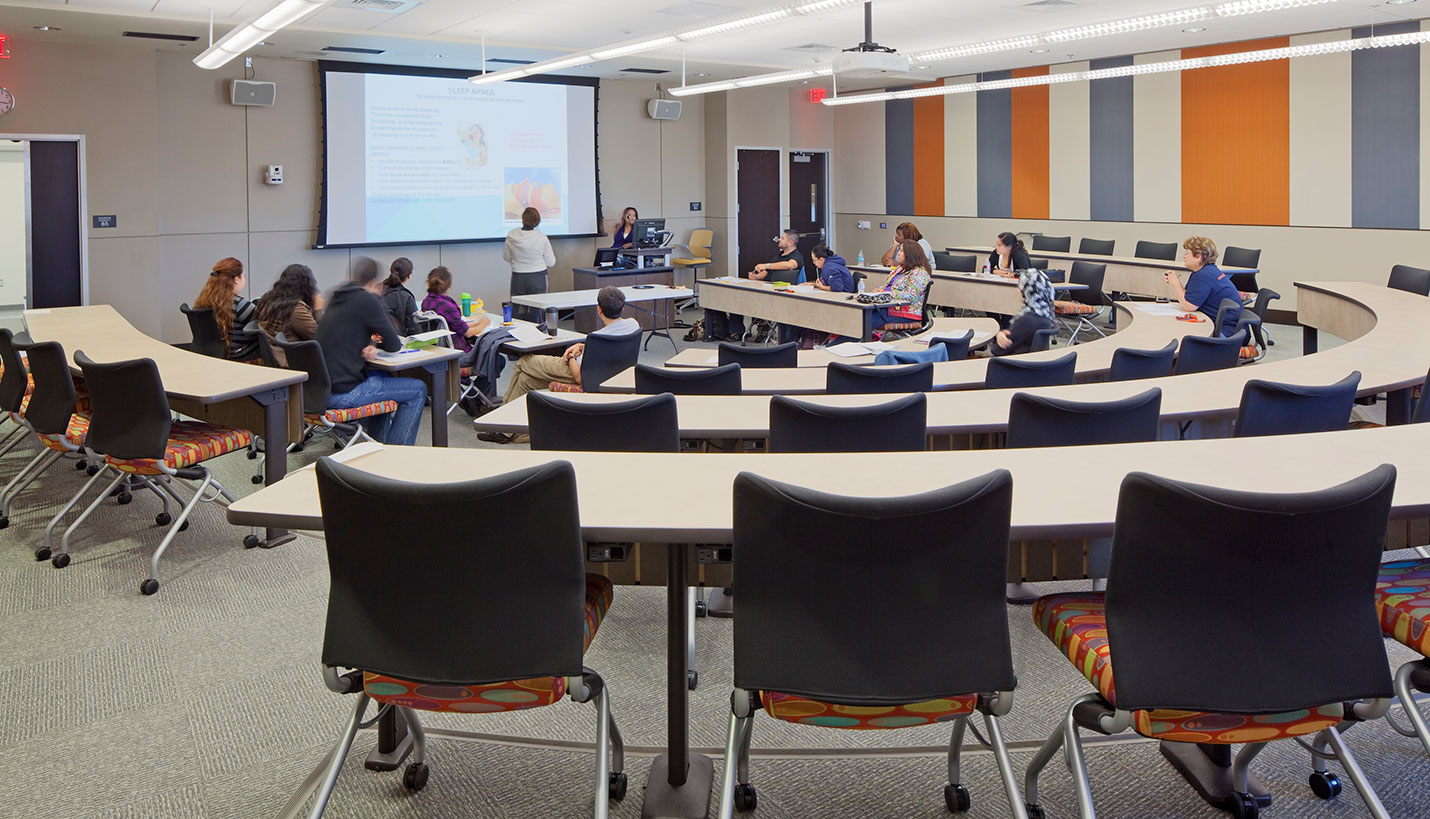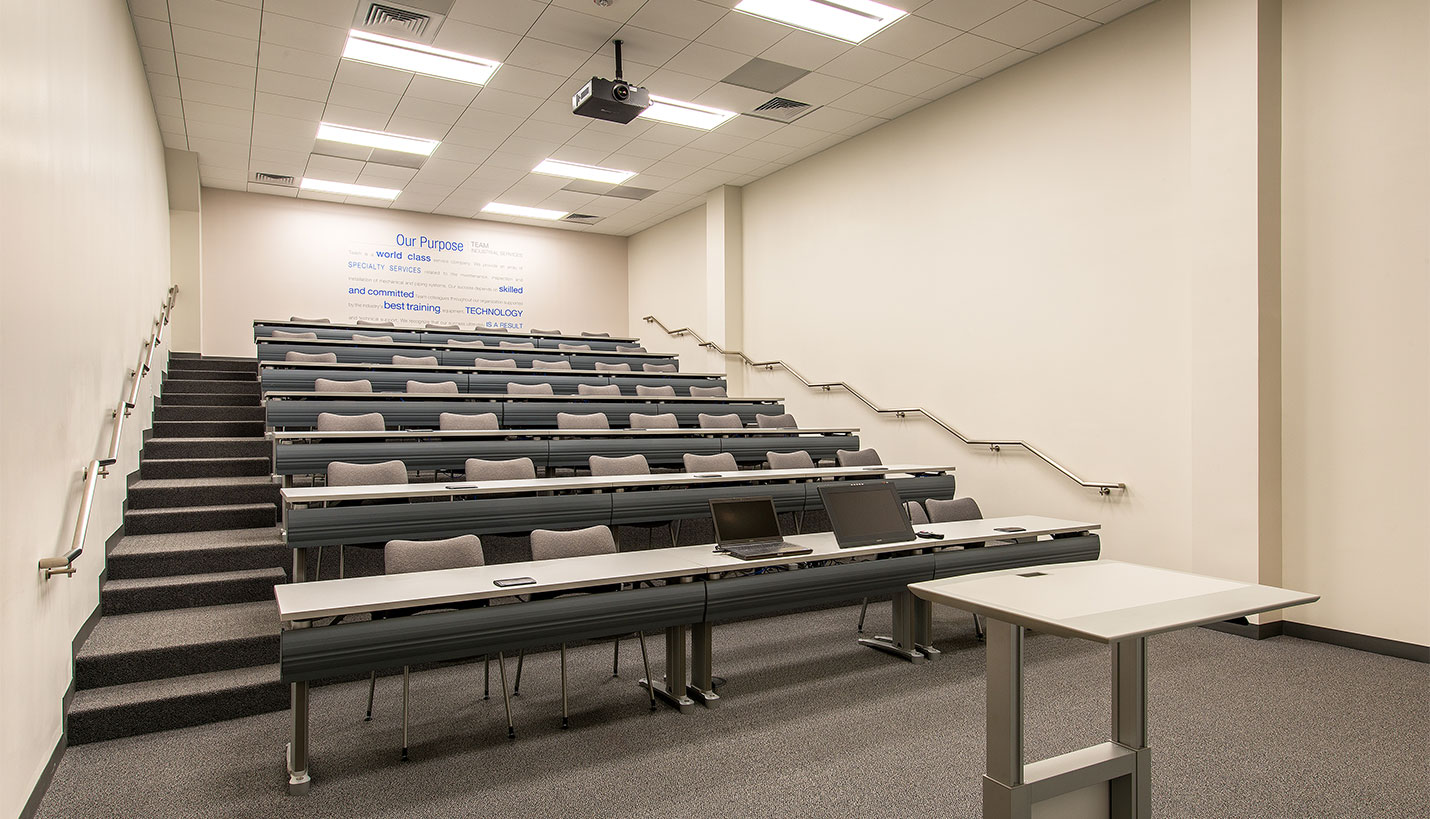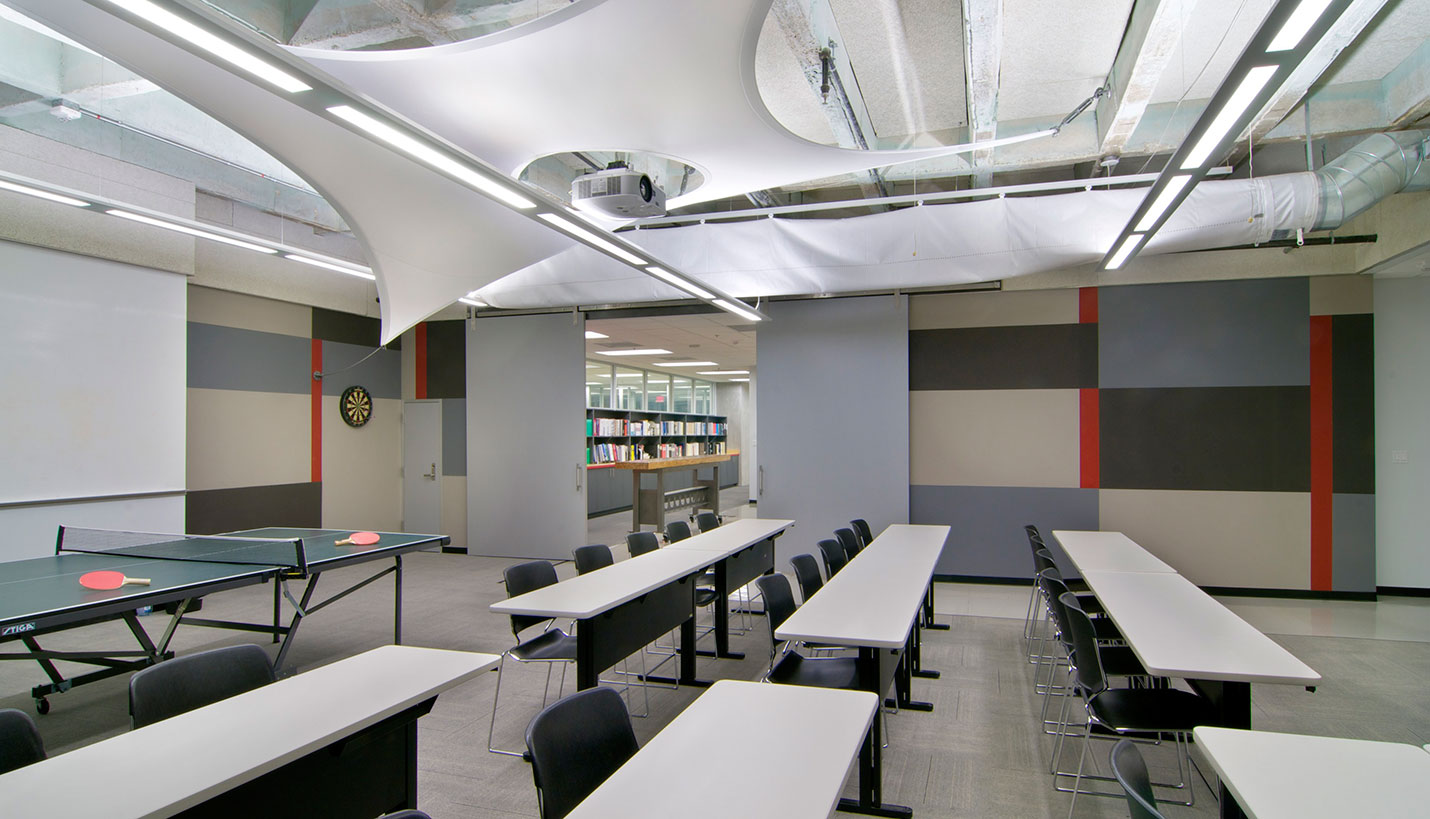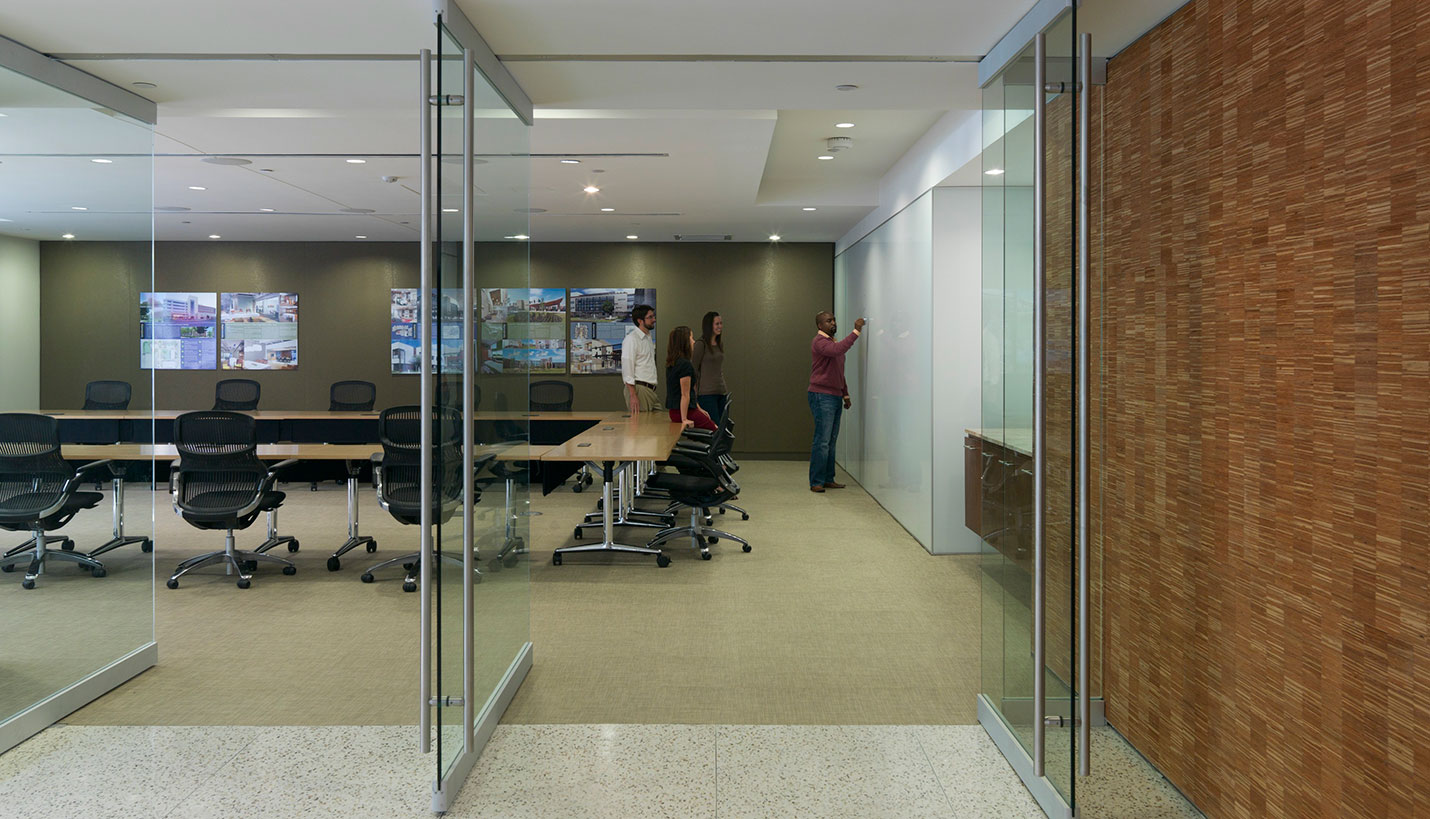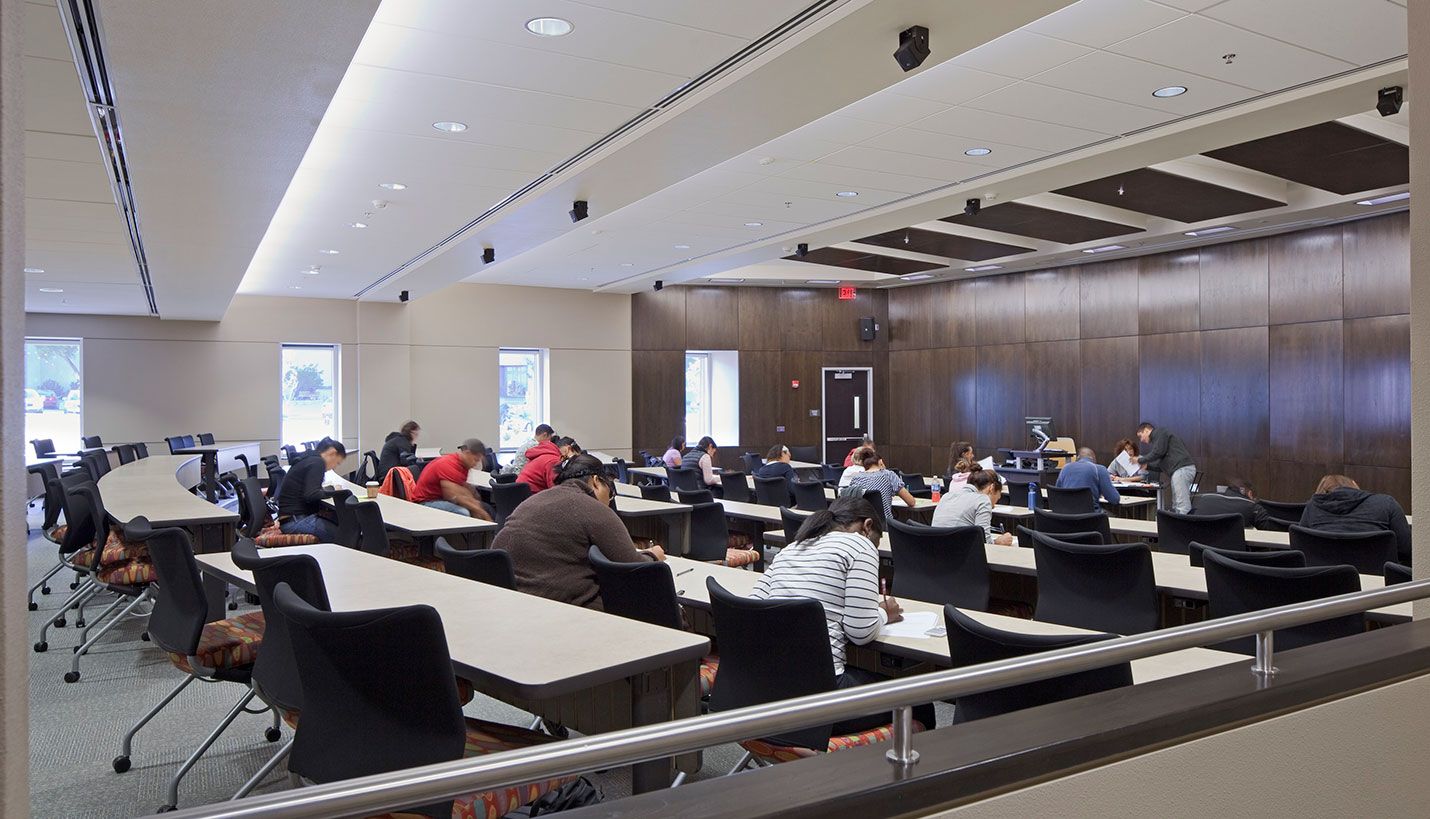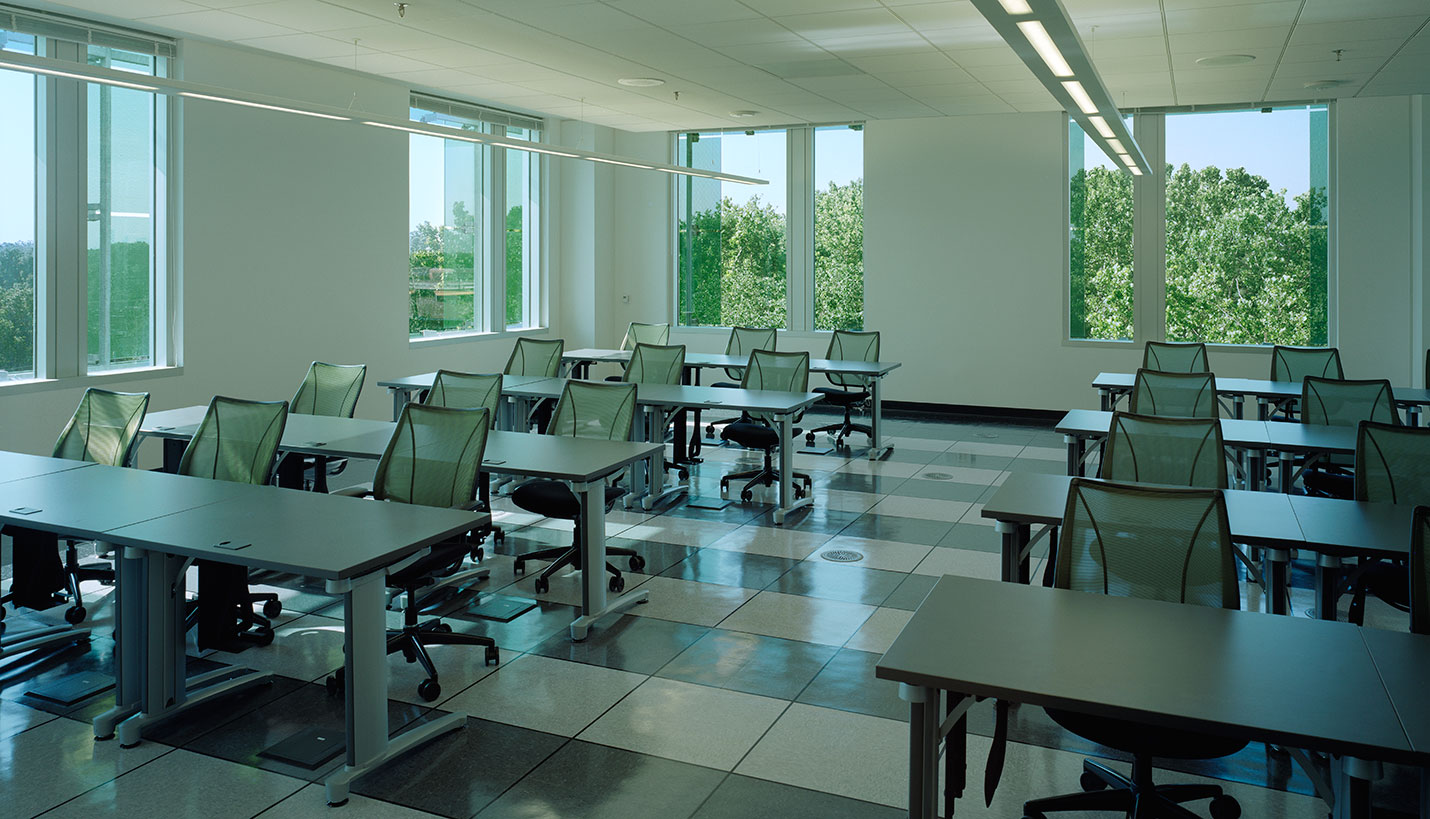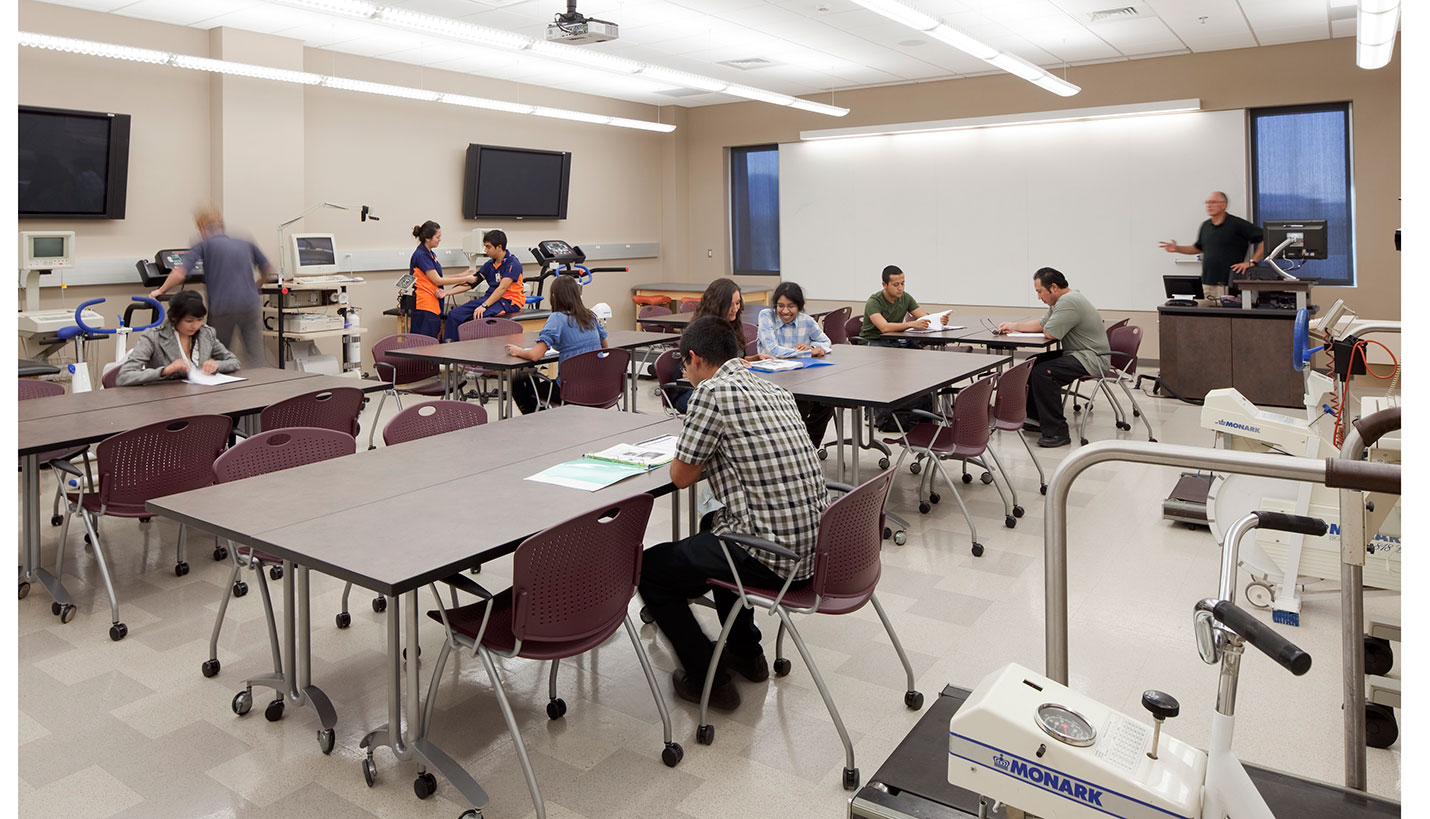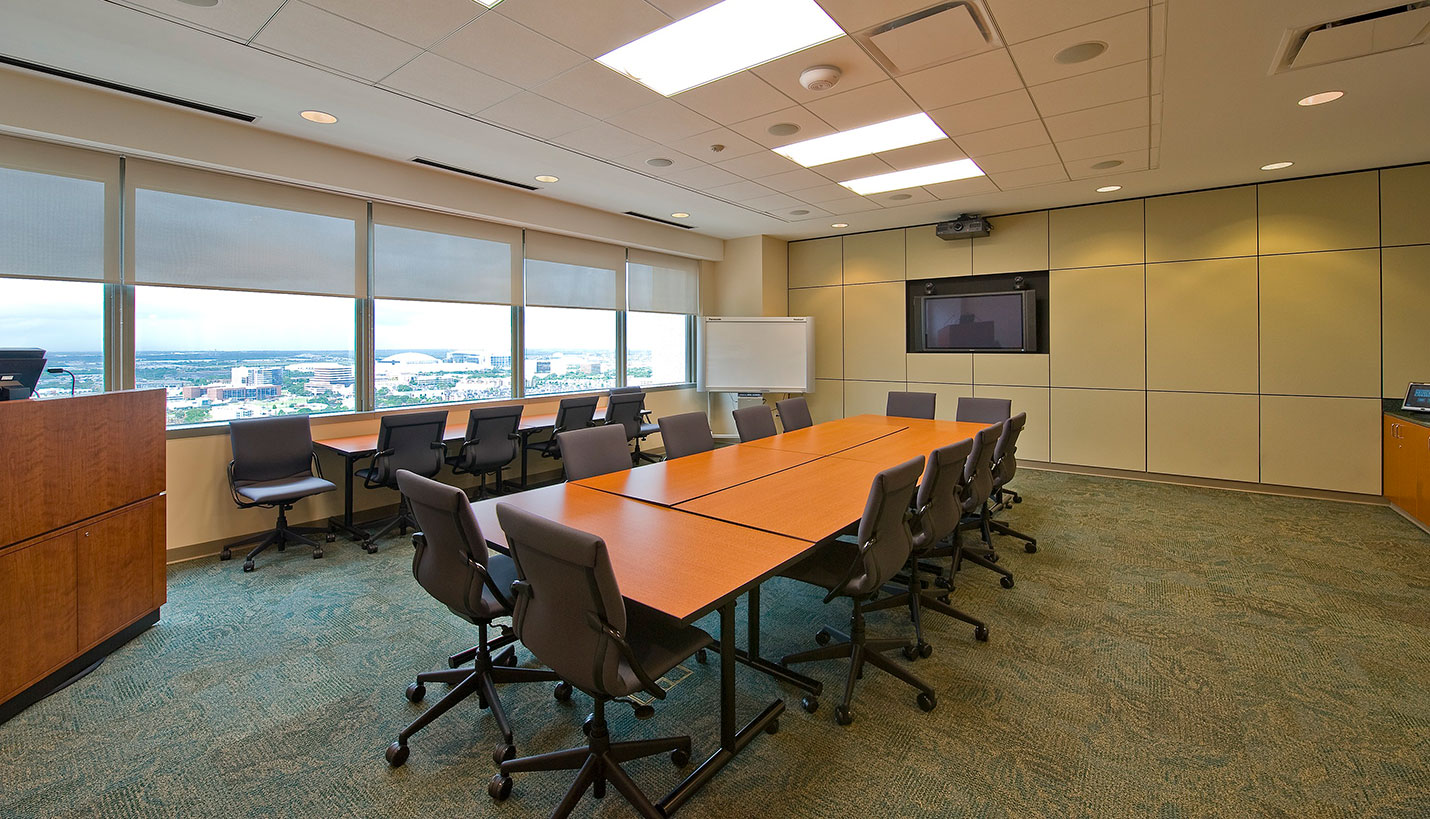3 Experts in 3 Minutes: Trends in Training Centers
With the surge in exploration and production along the Gulf Coast, Page has been busy designing training facilities for major oil and gas companies. While few people may think about them often, training centers can make a significant difference in how well a company succeeds in onboarding and educating its workforce.
We've compiled some words of wisdom from Ken Black, Page Associate Principal / Senior Project Manager; David Euscher, Page Associate Principal / Senior Designer and Marissa Yu, Page Principal / Interior Design Director, on the subject of training centers.
What new trends are you seeing in training center designs?
Changes in teaching styles that we see from the education sector are finding their way into corporate training environments. Learning now can take on several different forms throughout the course of a training day. These may range from a lecture-style format to group work to trainee-led discussions that are facilitated by instructors. These environments need a high level of flexibility and user-driven adaptability to be effective. Operable partitions in classrooms allow combining attendees into larger groups or dividing them into smaller breakout sessions. Training tables are now designed to be easily reconfigured as needed.
Collaborative learning involves instantaneous knowledge sharing, and tools like whiteboards are one efficient way of bringing people and ideas together. Towards this end, audiovisual and information technology play a great part in training programs today. While there is less dedicated space at the table for training manuals, there is multiple connectivity for personal laptops and tablets, both hard wired and wireless, as well as the ability to share individual content visually with others on a large screen.
What's different about client objectives for training centers today?
Clients are requiring multiple ways to achieve training opportunities, including remotely. For example, a top global energy company plans to train offshore rig personnel over the Internet. This way, the employees can renew their yearly certification at their convenience.
For clients with highly sensitive mission critical operations, on-the-job training may pose a risk to the operation or to others. These client types are served by full scale simulation facilities that are outfitted to mimic actual operation centers. This applies to hands-on equipment training as well as details of the working environment, down to finishes, furniture, lighting and acoustics. By recreating the actual environment to the extent possible, trainees have fewer unfamiliar conditions when faced with a critical operational situation.
Training centers also allow new recruits to become immersed in a company’s culture and philosophy while they learn the job skills they need. We’re seeing these training areas as opportunities for companies to use the design of the training environment to express their brand and core values.
What experiences does Page have that particularly suits it to address this design need?
In addition to our project experience in designing mission critical facilities, our experience in higher educational learning environments and student life centers also gives us insight into generational differences in the workplace population. These affect learning styles and work habits, which are important considerations for learning environments as the designs influence the effectiveness of the training as well as communicate messages about the organizations they serve.
With experience in designing both educational and petrochemical facilities, Page is able to understand the needs of employees and optimize the training experience. Employee training is not limited to computer interaction only; hands-on training of large equipment use also is necessary. Since Page has expertise in creating safe work environments for our manufacturing and research clients, we're able to provide the same level of safety in training facilities.
Our project experience ranges from dedicated training facilities that are skill or equipment-focused places that may be a part of a campus or a stand-alone building, to multi-functional rooms within a corporate lease space.
Contributed By
Ken Black, David Euscher & Marissa Yu
05/23/2014
People
Related Posts
- Emergent Design
- The Essential Steps for Bringing a Facility Project to Market Quickly
- Washington County Picks Page for 911 Center Design
- BD+C Magazine: Data Centers Keep Cool While Staying Hot
- Critical Power: Hospitals and Data Centers
- Cover Story: 'Metro Security' in Security Today
- Designed for Survivability
Projects
- ExxonMobil Upstream Research Company Technical Training Center
- MD Anderson Cancer Center Pickens Academic Tower
- Navy League of the United States Office Building
- Page Dallas Office



